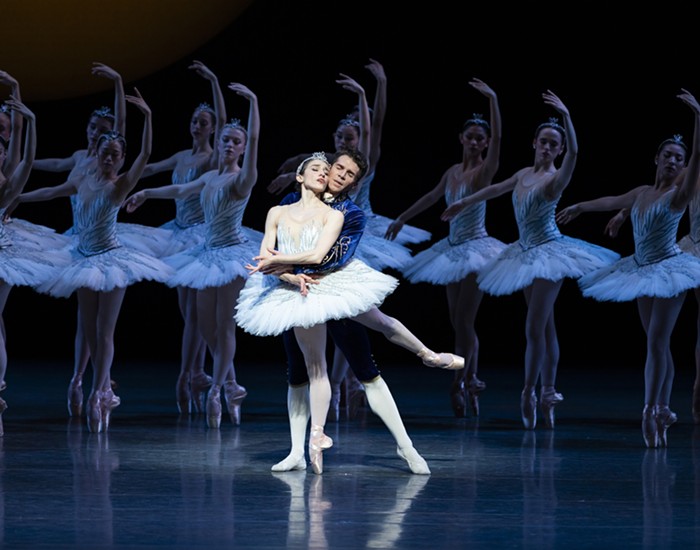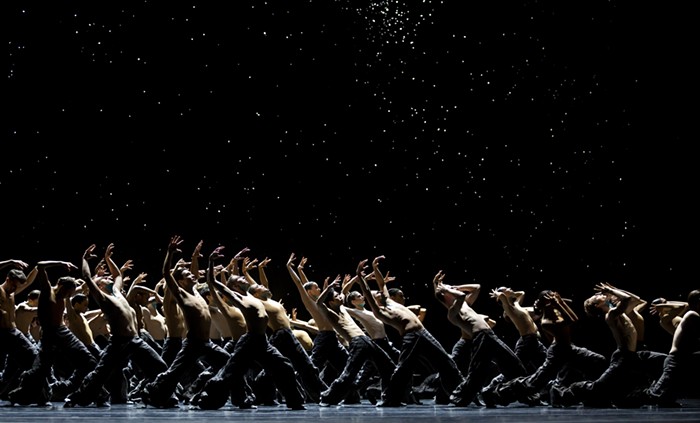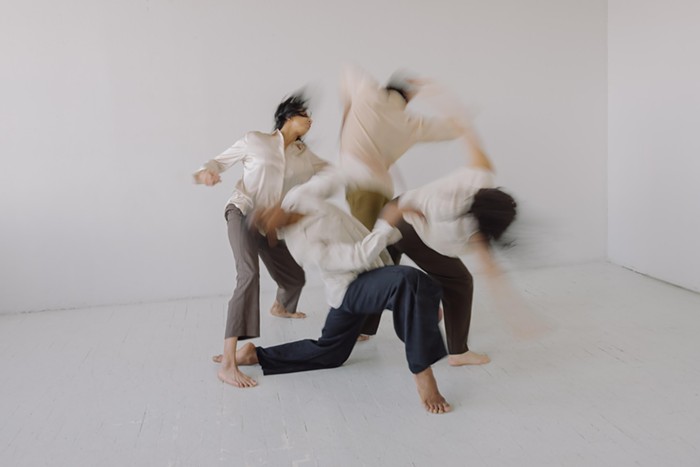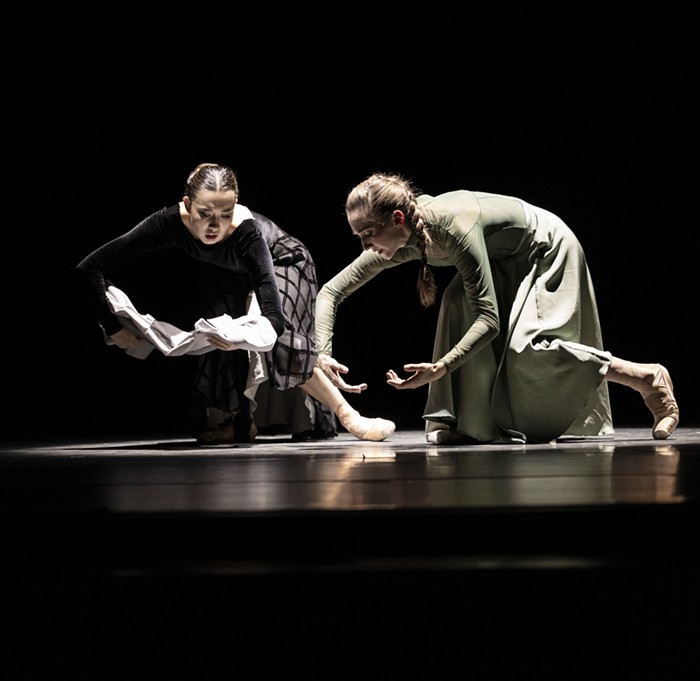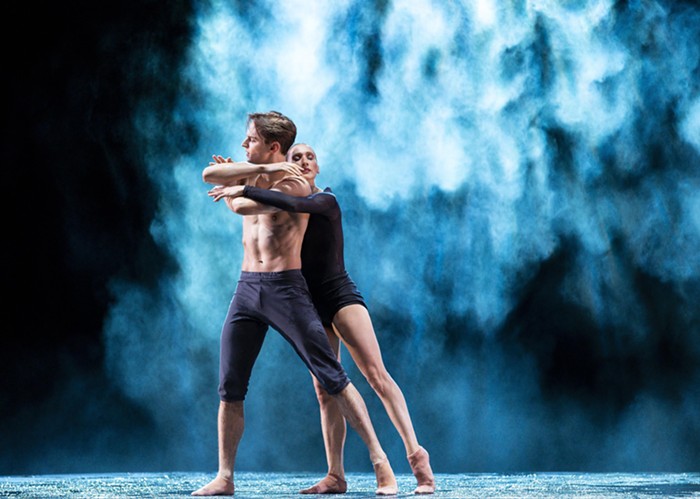
After a 25-year career that took her from Seattle to Monaco and back again, Pacific Northwest Ballet principal Noelani Pantastico will retire from the stage next month. She’ll bow out for the last time after a Sunday matinee of Jean-Christophe Maillot's cinematic and bawdy Roméo et Juliette, playing her signature role as the better half of Shakespeare's star-crossed lovers.
Though Maillot didn't create the role for her, she's filled it better than anyone ever has.
That's not to throw shade on Bernice Coppieters — Maillot's original Juliette, and the master ballerina who coaches Pantastico on the part — nor on the brilliant Carla Körbes, who retired from PNB in 2015, nor on anyone else! It's only to say that Pantastico's particular talents perfectly lend themselves to the task of bringing Juliette to life.
Her explosive energy captures the barely containable thrill of teenage infatuation, her youthful features highlight the character's age and in so doing heighten the inevitable tragedy of her suicide, and her acting chops sell the chaotic romance that so many have (so wrongly, in my view) been taught to dismiss as a mere vehicle for lecturing the audience about the dangers of adolescent rashness. She's the GOAT Jules. The great one. And it's almost impossible to imagine her dying onstage for the last time without knowing that she'll be the one to resurrect the role again.
Pantastico will leave Seattle for Carlisle, PA, where she’ll shape the growing minds, bodies, and creative geniuses at her prestigious alma mater, the Central Pennsylvania Youth Ballet (CPYB).
Though she had every intention of dancing professionally for several more years, she said she couldn't pass up the opportunity to return home and inspire the next generation of dancers. But she was also running up against a number of harsh realities, she said in a phone interview on Wednesday.
As the oldest dancer in the company, she's watched the pandemic, other opportunities, and age prompt several of her close colleagues to announce their own retirements, including one of her primary partners, Seth Orza.
"I looked around the company and it was weird. It was the same place, but there were all these new people — all these very, very young people," she said.
Determined not to let the pandemic dictate the end of her career, she stuck it out through COVID's dips and surges, its tentative openings and its abrupt closures, its virtual horizons and its Zoom fatigue, but when PNB started its season this year "my body didn't like it," she said.
Aside from the daily challenge of dodging a deadly respiratory virus, training at home rather than in the studio brought back "foot and ankle stuff" she's always dealt with, and it also added knee pain to the mix. She also felt the lockdown lifestyle weakening her intrinsic muscles. Still, she wanted to continue dancing and growing stronger, but then the call from CPYB came, and ultimately she decided that Roméo et Juliette would serve as the best "bow on the end of everything."
"I thought it would be a great way to go," she said.
The second she decided she was going to stop, she immediately felt a sense of relief. "Just to know that I don’t have to put my body through processes where I’m hurting myself..." she said, trailing off with a laugh and sigh.
CPYB, founded by the late and legendary Marcia Dale Weary, also produced fellow PNB dancers Leta Biasucci, Abby-Jayne DeAngelo, Zsilas Michael Hughes, and Carrie Imler, who retired in 2017 after a stellar performance of the Black Swan's fouetté sequence from Kent Stowell's Swan Lake.
As a young ballet student in central PA, Pantastico, a military brat from O‘ahu with five siblings, struggled to balance her responsibilities at the house with her budding ballerina career. Nevertheless, she kept at it. She flew across the country to take summer courses at PNB in the mid-1990s, and at 16 she took the bold step of attending a cattle call audition for a spot in the company.
She showed up to the audition in her student uniform — a black unitard and pink tights — while everyone else showed up in those weirdly elegant sweats that professional dancers wear. She felt out of place. "There were over 120 people there. It was awful, so awkward. I didn’t think I was going to get the job," she said.
And yet, she did.
After the audition, PNB's founding artistic director, Francia Russell, pulled her aside and asked her for photos and videos to show the other founding director, Kent Stowell. A couple weeks later, Russell called her up and offered her an apprenticeship. She joined the company in August of 1997 at the age of 17.
Pantastico did not look like many of her peers. Back then, the company aesthetic leaned tall and long-limbed, she said. She was shorter and more muscular, with "big calves and big thighs for my height." Stylistically, she excelled as a technician. She turned like a top and loved to jump. After a year as an apprentice, she toiled away in the corps de ballet, developing those skills and trying to stand out in a crowd of bouncy tutus. In 2001, she was promoted to soloist.
A pivotal moment arrived in the summer of 2003, when the 23-year-old stepped ahead of the company's principals to play Aurora in Ronald Hynd's The Sleeping Beauty. She absolutely smashed the famously challenging role. Writing for the Seattle P.I., R.M. Campbell gushed: "She was quick when needed, always supple, wholly graceful. It was not hard to see the power she has at her disposal, but she deftly shaded the steel with silk." PNB promoted her to principal the following year.

After Peter Boal came on as PNB's artistic director, he brought Maillot's Roméo et Juliette to Seattle in 2008. Though he originally tapped Körbes to play Juliette, an injury kept her off the stage. Pantastico took her place and performed all nine shows. Her work with Maillot during that time sparked her interest in his company, Les Ballets de Monte-Carlo. That year, she left for Monaco and joined the troupe as a soloist.
The change of company prompted a change in Pantastico's disposition toward dance, one that she'd carry with her throughout the rest of her career.
Maillot's work focuses more on artistry and storytelling, and he privileges acting and intention over mastery of classical technique, Pantastico said. She learned his rep over the course of the next four or five years, developing her acting and stage presence along the way, but at a certain point she felt as if she was hitting a ceiling. In her seventh and last year with the company, she asked Maillot if he could see her taking on more featured roles, and he told her he didn't. "I can always count on the French for being very direct and honest," she said, laughing. The two "love each other very much," and the eventual split was ultimately amiable.
She returned to Seattle in 2015 at Boal's invitation, embracing complexity in her character work and exploring more ways to tell stories through dance. "I don't really care about turning anymore. I just want to do my job safely so I can get through it at the end of the day," she said.
Since then, her prowess as an actor and thinker has more than compensated for any half-steps she may have missed over the years. A minor but deliberate readjustment of her wrist during a key moment from the 2015 production of Roméo et Juliette transformed a sappy gesture into a heartbreaking one. She somehow managed to inject romance and grace into her role as a very pretty rock in George Balanchine's Jewels. She made a reverse piggyback ride in Alejandro Cerrudo's Silent Ghost look like a touching romantic gesture rather than some weird thing a frog does with eggs. She died in the most spectacularly nuanced way in Crystal Pite’s Plot Point. She fucking turned into water in Cerrudo's One Thousand Pieces just before the bug shut down McCaw Hall, and she brilliantly reimagined Alice in Wonderland during lockdown for Penny Saunders’s ALICE.
In the midst of all that, she also found time to launch Seattle Dance Collective along with her PNB colleague and erstwhile Romeo, James Yoichi Moore. The two have since produced innovative and incredible contemporary work for both the stage and the screen, and Pantastico says they'll continue to do so for the foreseeable future.
And though she's closing out her career next month with an old standard — a role she cannot tell me how many times she's played — she still feels as if she has tons of prep work to do. "You have to be vulnerable to each process, because it's the only way to do better each time," she said.
You can watch her breathe new life into her trademark role starting Feb 4.
After that, she'll pack up her years of experience, her memories, her pointe shoes, and her cat and then head back home to teach. “I want to give them all that I have,” she said of her future students. And to hear her tell it, she has plenty left to give.

